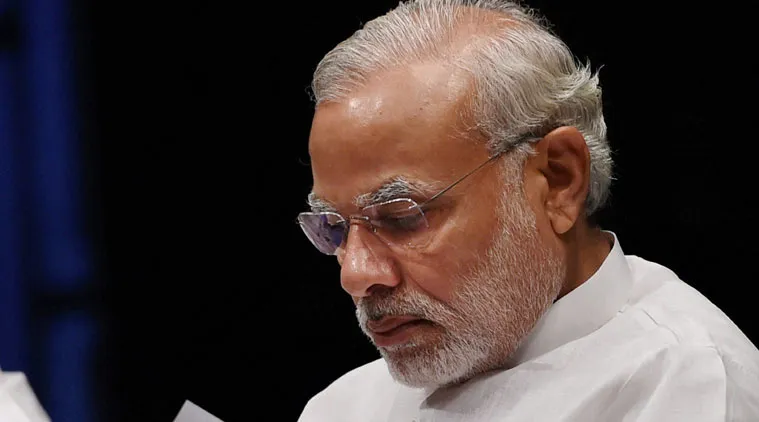Aadhaar, implemented by the Unique Identification Authority of India (UIDAI) and launched by the previous UPA government, provides a unique, bio-metrically verified 12-digit number to all residents of the country.
Prime Minister Narendra ModiTuesday’s Supreme Court order reiterating that Aadhaar cannot be made mandatory, while limiting its use to specific schemes, could not have come at a worse time for the government. For, barely two months ago, PM Narendra Modi, chairing a high-level meeting, had pushed for universal enrollment under the ambitious project by the year-end and directed that its use be expanded.
Two days ago, the apex court had also referred to a Constitution Bench a clutch of petitions, which contended that Aadhaar enrollment was a breach of the “fundamental” right to privacy.
According to the minutes of the meeting chaired by Modi on June 18 to review the progress of Aadhaar and the Direct Benefits Transfer scheme, a decision was taken to complete enrollment of all residents by December 2015.
“UIDAI and RGI need to collaborate to complete the process of Aadhaar enrollment of all residents by end of December 2015. In this connection, enrollment drive may be undertaken in schools and Anganwadis also. The modalities for enrollment of children below 5 years may also be worked out,” stated the minutes, which have been examined by The Indian Express.
Aadhaar, implemented by the Unique Identification Authority of India (UIDAI) and launched by the previous UPA government, provides a unique, bio-metrically verified 12-digit number to all residents of the country.
Despite being endorsed by the NDA government, Aadhaar has been hit by the lack of any legal backing, particularly with the National Identification Authority of India Bill currently in cold storage.
“There is a need to identify a list of 8-10 applications/services, in consultation with relevant Ministries/Departments, where concerted efforts will be made in the next three months to fully leverage the Aadhaar platform towards a complete re-engineering implementation of the programmes/schemes. This could be done in sectors such as immigration, passports, railways, telecommunications, mobile connections etc,” the minutes stated.
It was also decided during the meeting to expand the ambit of Aadhaar by making it a “longer term goal” to ensure that all “persons on Indian soil”, including Non Resident Indians, OCI and PIOs and even visa-holding visitors, be “empowered with a unique identity/identifier that can be authenticated on a digital platform any time anywhere” and permanent enrollment centres be established at International Airports.
During the meeting, Modi also directed the linkage of existing passports with Aadhaar numbers “immediately” and the seeding of numbers with the PAN card database.
The meeting further decided that a one-day workshop be conducted by the Ministry of Home Affairs for jail authorities across the country to “sensitise them on the potential of leveraging Aadhaar infrastructure for improving Prison Management systems such as attendance of staff and prisoners…” and suitable applications be developed to be adopted by jails.
The need to develop a unique identity for corporations, limited companies, registered societies and trusts etc, was also discussed.
http://indianexpress.com/article/india/india-others/2-months-before-sc-jolt-pm-modi-pushed-to-expand-aadhaar-cover/

Leave a Reply